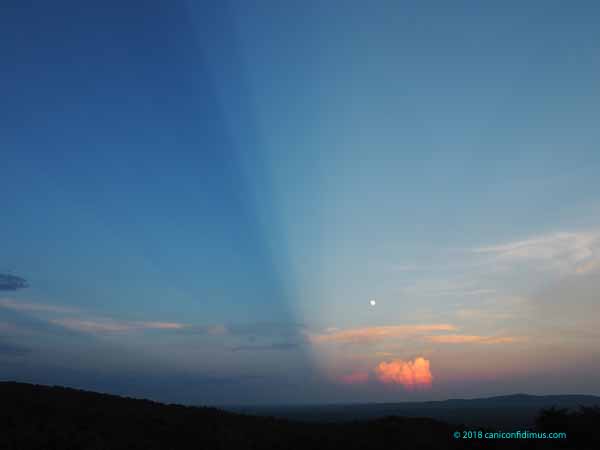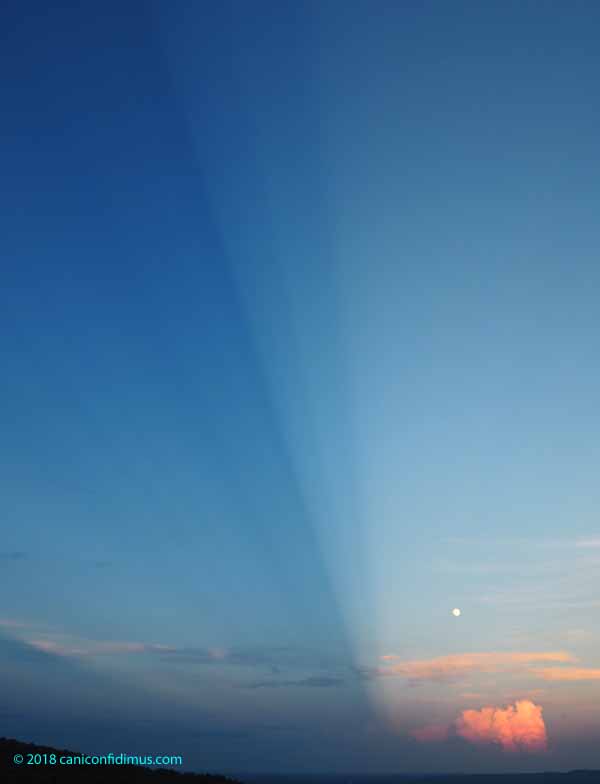Leah called me out onto the front porch Tuesday evening right at sunset to see the sky. This is what we saw.

The Sun was setting directly behind us, near the horizon but high enough to illuminate the thunderstorm in the distance. Apparently there were some clouds between us and the Sun, and the shadows of those clouds spread across the entire sky.

Here’s a closer shot at the moon, the clouds and the sky.

The normal view of crepuscular rays is of bright, fan-shaped rays shining out from the Sun through gaps in the clouds. What these images show are the dark areas between the rays. “Normal” crepuscular rays are, as I said, fan shaped, with the narrow part near the Sun, getting wider as you look further from the Sun. These dark “rays” appear wider closer to us, the viewers, and the Sun behind our backs, and they get narrower as they go away from the position of the Sun. How can that be?
Well, my explanation is that the fan-shaped appearance of “normal” crepuscular rays is an optical illusion. The rays are nearly parallel, widening only a small amount. However, they look wider as they get closer to us, just like a road looks wider where your car is and narrower further away. The rays look like they are fan shaped because we tend to see the phenomenon as two-dimensional, as if the rays were pasted on the sky in the far distance. Instead, the rays are actually shining towards us.
This is what we see in these pictures; the rays have shot out from the Sun around the clouds and passed over our heads, disappearing into the distance in the east. Since the rays (or the darker areas between the rays) are very close to parallel, we see them as wider directly overhead and appearing to get narrower as they disappear into the distance. I am not sure I remember seeing this phenomenon before.
If we could have seen the entire dome of the sky, I think we would have seen crepuscular rays appearing narrow at the Sun, wider as they approach and pass over our heads, and then getting narrower again as they shine off into the distance. That would have been a sight.
These rays stayed visible for about a half an hour. I watched as the shadow of the Earth rose up on the bright cloud in the distance until the cloud was a barely-discernible gray mass on the horizon. I thought about the Sun moving towards the west and the shadow climbing up the cloud, and it occurred to me that the Sun was not, of course, moving; it was us. The surface of the Earth was flying at around 860 miles per hour around its axis, at the latitude where we live, carrying us and dragging the entire atmosphere along with it. So it was not the Sun that was moving, gradually hiding the clouds, but the clouds themselves that were retreating from the Sun.
Later Tuesday night that cloud (or one very like it) gave us a show as lightning flashed inside the cloud.